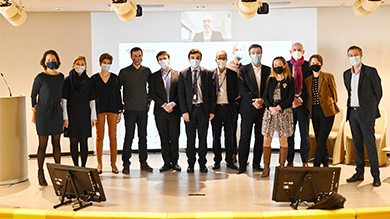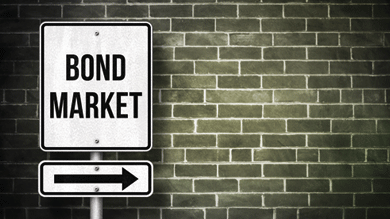The world economy is set to generate 3.4 billion tons of waste per year by 2050 if it continues at the current pace – almost twice the current level – yet we already struggle to collect and process the current figure. Meanwhile Earth Overshoot Day – the point in the year that humanity has used up all the resources that the Earth can generate in a year – is inexorably taking place earlier and earlier, with this year’s day on July 29. As waste soars exponentially and resources are used up, the circular economy offers a real alternative to the current linear “produce-consume-dispose” economic model, yet how can this become a new standard for society? View our full report, with two experts here at Natixis, Ashley Blows, managing director, transport & environment industry group and Radek Ján, infrastructure and green finance specialist.
RADEK
JáN
Infrastructure and green finance specialist
ASHLEY
BLOWS
Managing director, transport & environment industry group
From linear economy to circular economy
“The degradation of the natural world is already undermining the well-being of 3.2 billion people – or 40 per cent of humanity. Luckily, the Earth is resilient. But she needs our help. We still have time to reverse the damage we have done.” This statement from the Secretary-General of the United Nations on World Environment Day on June 5 this year invites us to stage a paradigm shift and move from the linear economy built on a “take-make-consume-dispose” model, to the circular economy. The concept of “circular” economy is based on maintaining the utility and the value of materials and products for as long as possible, and avoiding waste with sustainable use, eco-design, responsible consumption, etc.
Exponential growth in waste
Waste reduction and recycling are at the center of the circular economy: each year two billion tons of waste are produced worldwide, with this already vast figure set to hit 3.4 billion tons by 2050 according to the World Bank, due to a combination of demographics, increasing consumption in developed countries, and emerging markets’ aim to adopt similar consumer patterns.
However, waste management varies vastly from one country to another, with around 90% of waste in low-income countries openly dumped or burned, which results in a plethora of negative environmental, health and safety consequences. Annual global plastic production has increased from 2 to 380 million tons since 1950. This is projected to double by 2035 and quadruple by 2050. However, only 10% of plastic waste is recycled according to the European Environment Agency.
Inadequate infrastructure
The reason for this is the lack of adequate waste collection and recycling infrastructure. A number of countries simply do not have access to this kind of set-up, while the lax regulatory set-up does not provide an incentive to develop it. Even Europe exports some of its waste due to a lack of infrastructure, despite its insight into these issues, with the continent exporting plastics to Asia where at best they are processed in sub-par fashion, with most waste finding its way into water, dumped or burned. This leads to multiple impacts, with sea pollution and the increase in microplastics combining with the climate impact as plastic production – derived mostly from fossil fuels – and burning lead to greenhouse gas emissions.
The circular economy is not yet profitable
Another major hindrance is the technical and economic feasibility of this circular strategy, particularly for electrical and electronic equipment: components are difficult to collect separately from other waste streams, while waste can often contain hazardous substances which cannot be recycled or recirculated. Additionally, the price of recycled components is often higher than virgin resource materials, which explains why rare earth elements are often not recovered for use in mobile phones and other batteries. Similarly, construction and demolition waste typically enjoys high recovery rates (70% in the European Union), but is relegated to backfilling operations or low-grade recovery, for instance on roads. Use in construction could be considerably improved by developing standardization, providing better information on quality and rolling out incentive policies.
Working towards incentive-based regulation
Faced with this situation, how can we stage this shift to a circular economy? Consumers hold part of the answer as they can sort waste, keep equipment longer, have it repaired, opt for local products as well as recycled items. Education and awareness campaigns can also step up knowledge of this issue.
However, unless regulation provides an incentive – or deterrent – there is little chance of staging a real paradigm shift. Waste collection offers a very telling example: France has produced 4.6% less waste per capita since 2007, according to the ADEME, after implementation of tariff incentives led to more efficient sorting among households, while mandatory waste sorting for companies has increased recycling rates. In the building industry, stringent sorting could further improve recycling of various materials. Meanwhile regulation on electronic waste could introduce requirements from manufacturers that encourage them to sort and opt for recycled components.
Finance also has a crucial role to play. Several financial instruments from the “green & sustainable” family of bond and loan formats currently available in the market can be readily used for financing waste management activities and the transition towards a circular economy. Investors are increasingly focusing on meeting ESG commitments and are showing growing interest in this type of investment.
We have every reason to be optimistic
We have every reason to be optimistic. The transition to a circular economy is under way and increasing awareness is firmly establishing new consumer habits. The European Union has set out an action plan as part of the European circular economy package, while a number of initiatives from the G7 and the G20, such as the G7 Alliance for Resource Efficiency (2015) and the G20 Resource Efficiency Dialogue (2017), work towards a circular economy. Technology to eco-design products and manage waste exists, there is constant innovation and growing efficiency, and industrial players and investors are setting increasingly ambitious ESG criteria. Now regulation must set the stage for the circular economy to truly take root.
















